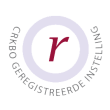Why I like tutoring Dutch through Skype

Most of us are familiar with Skype or have at least heard about it. But that’s only the case since a few years. About nine years ago I met an Afghan immigrant in Utrecht, the Netherlands and he told me about free daily chats with his family and friends in Kabul. I was happy for him that he could contact his far-away friends for free, but somehow I didn’t realize at that time that this new ’thing’ on the computer was so revolutionary and that this man originally from Afghanistan was an early adopter and a real trendsetter. Only when a friend of mine showed me how he skyped with his friend in Tokyo a year later I finally became more like a follower. But mind you, not in using it in education though.
Many educational options
Using online tools to teach Skype is not only like a free phone that also offers video images of your beloved ones abroad, but moreover it offers great options for education. The inventors of Skype in Estonia released their first version in 2003 and have invented a unique way of letting anyone with Internet talk to each other on a global scale. They’ve offered a hands-on package that could be downloaded within minutes and bring people together in both private and professional settings. Business though had already discovered its assets much sooner than schools had. I think that schools and universities don’t value online teaching and tutoring options too well. Many of them are seriously lagging behind in integrating it in their teaching methods and only a few teachers and professors are using distanced learning methods. School-wide it hasn’t been adopted yet. I think using Skype is especially practical and valuable in one-on-one tutoring situations, for coaching or giving individual instructions. Think of remedial teaching for students who struggle in larger groups because of fear of failure, dyslexia or autism. Some of my clients approach me because of these learning issues and they love to be tutored in smaller groups or one-on-one through Skype.
Advantages of distance and real-time learning
I’ve been tutoring online using Skype since 2011 and I’ve come to find many advantages. Here are the most prominent ones I like to share with you:
- Users of Skype can connect at any time and any place with Internet;
- Skype is a free program (www.skype.com);
- Online teaching through Skype is user-friendly for both teachers and students;
- There is zero traveling time and traveling costs;
- Skype lessons can be offered in a very flexible way; if something comes in between you can quickly change times or dates without having someone being on the road yet;
- You can use Skype for one-on-one sessions, but also for more than one student. From my experience a maximum of three students works best;
- Skype offers reasonable audio and video quality; sometimes you do have problems, but hey, it’s a free medium so be aware of that!
- Both student and tutor are constantly in contact and therefore there is always FOCUS. Focus on content as well, whereas students in classrooms can be distracted more easily; see this as the modern way of a private class;
- Because Skype contains a handy chat bar to share links, words, sentences, pictures etc. you can share a lot of information within seconds and realtime (to compare: the Mac-videoconferencing tool Facetime doesn’t contain this chat bar-functionality);
- The use of chat creates a useful history for both student and teacher; one can always look back at what was discussed in previous classes;
- At the start of a series of lessons teachers can record (parts of) sessions with the consent of the student in order to use the audio for comparison later on; this way improvement can easily be ascertained. For recording I like the simple and free screencasting program such as Jing;
- If you want to contact someone who doesn’t use Skype on his or her computer you can also call through Skype to a landline or mobile phone; for this functionality you pay a few cents per minute, far cheaper than regular calling rates;
- Skype provides a video function that allows users to show pages, pictures anything in for example a paper book or you can show your student that it’s the cat or dog that’s distracting you and that you have to take a break to let it out;
- You can turn off the video function in order to focus on speaking and listening;
- Also in regular school situations Skype is very handy: if classroom students have to stay at home because of anything that withholds them from attending class they can still attend through Skype sessions. To give you an example, one of my students was with his parents in Chile, while his classmates were attending English lesson in the Netherlands. We had him join us through Skype.
Some downsides of teaching via Skype
There are a few downsides too of using Skype for language teaching. It depends on technology and yes, technology lets us you down now and then. Either the devices don’t work optimally or there is something wrong with the Internet connection. When teaching foreign students in countries where the Internet connection isn’t stable you sometimes have to cancel a lesson. It happens occasionally that we have a delay in the connection and that the other person freezes temporarily on the screen. That’s quite irritating, but I’ve noticed that when turning off the video the connection improves because less data is transported. After you see that the connection is getting better you can try to use video again. This all seems quite a hassle and can indeed influence your lessons, but it only occurs incidentally. Once I had to cancel a lesson because of a sudden power outage that took place in the complete village of one my students. Some students of mine in South Africa have to deal with planned outages, so-called load sheddings (to avoid total collapse of the electricity supply grid), and then we have to postpone the lesson. Compare it with being in a traffic jam or a delayed train on your way to a language training center and you don’t make it on time. Simply a matter of forces majeur!
Another disadvantage while using Skype is that the quality of the student’s device (computer, cam, audio, Internet speed and connection) is far from good. Sometimes the video reception is bad and you only see a blurred person. That still will work as long as the audio sounds all right. Audio is a must, video is a nice extra. Having both is perfect!
Happy students
To be able to offer customized Skype lessons I always interview my students during about half an hour. An intake interview is essential, to find out whether devices and functionalities work, whether there is chemistry between me and the student, to find out about learning objectives and current language levels. If this is all done we arrange a lesson schedule and believe me, it is a provisional schedule that can be changed during the training period. 
Who are my students?
In this blog I talked a lot about my students. But who are they actually? Well, it is a blend of characters, ages and nationalities who knock on Taaltutor’s door. They range from age 16 through age 72 and come from the Netherlands, Belgium, Italy, Poland, Argentina, Brazil, the USA, South Africa and India. They ask for individual tutoring, conversation or presentation training or they want to get ready for relocation to the Netherlands. Some need to enhance their ability to chat informally with English speaking relatives like a son-in-law or a grandchild or they want to prepare for official exams such as the Dutch language exams abroad. Some love to expand their English or Dutch vocabulary in order to speak faster and more eloquent. In short, I teach all kinds of students. Anyone who likes to learn, practise or improve his or her Dutch or (American) English and at least wants to bring one of these languages to a higher level in an efficient, easy and fun way. If I can reach all that through online tutoring and teaching I am a wicked happy tutor!

